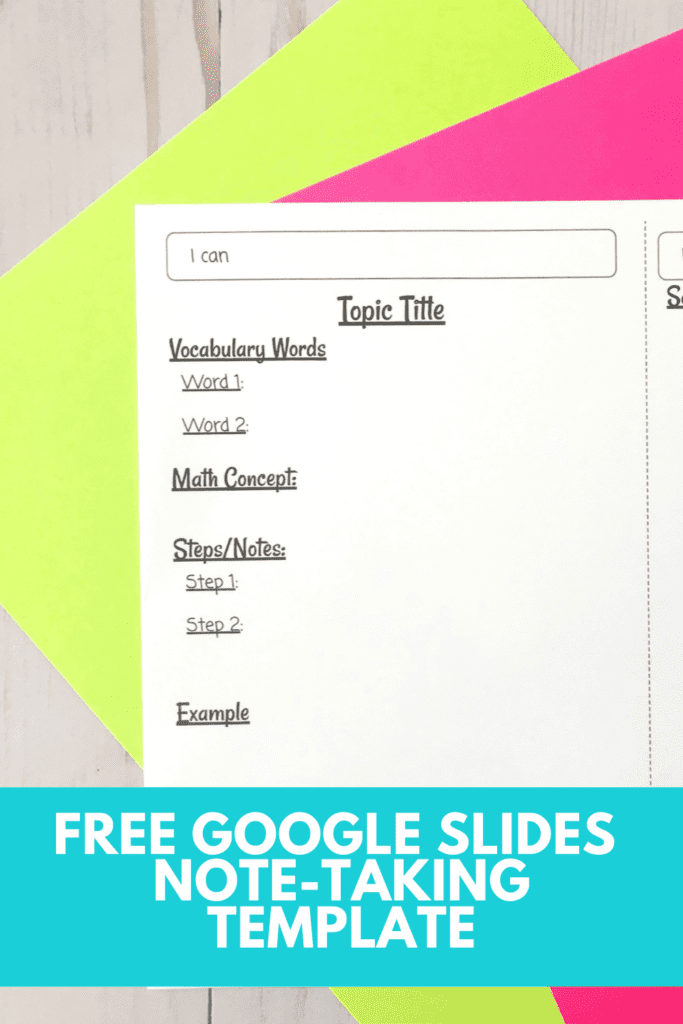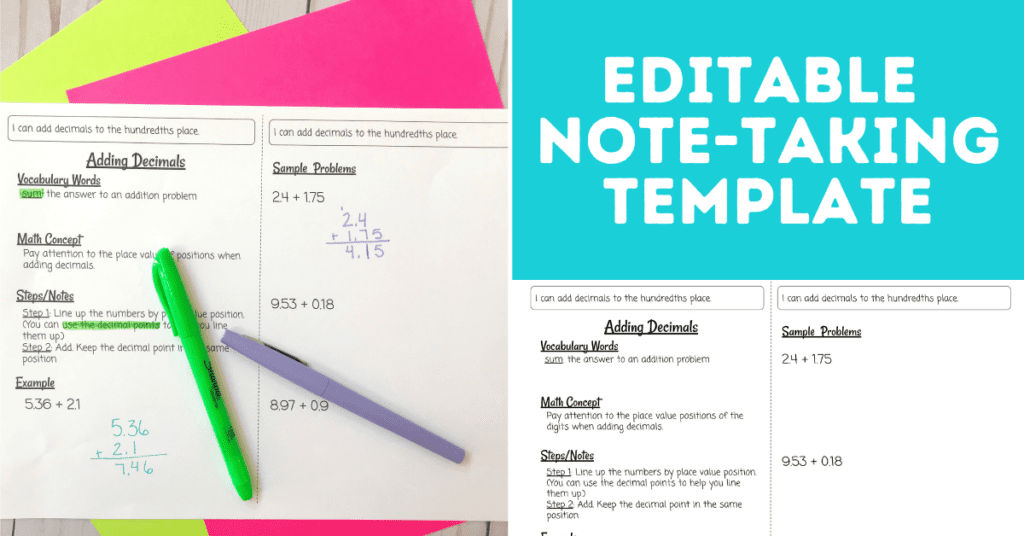Learning how to teach students to take notes not only benefits students, but makes the job of a teacher so much easier.
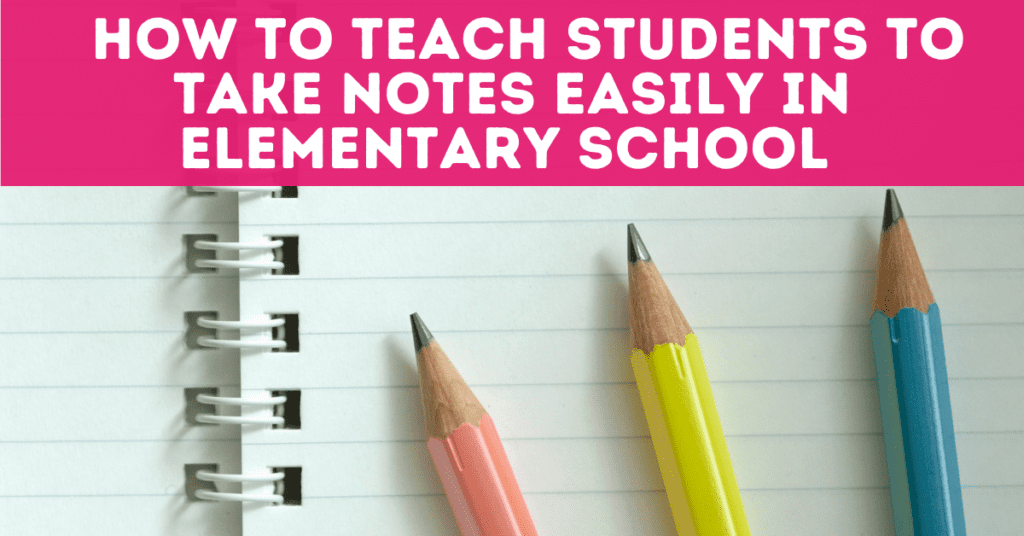
Why Note-Taking?
Note-taking is a life-long skill. To this day, if I take notes during a staff meeting, I am much more aware of what I need to remember than I will be if I sit and “listen.” For our upper elementary students, the math they are completing in class is becoming more and more complex. Having a collection of notes for vocabulary, strategies, algorithms, and using models is highly beneficial.
Year after year, parents thank me who were previously frustrated with the lack of a textbook as they have tried to help their children with their math homework or help them study. Parents appreciate that notes are available to help both them and their children understand the topic to practice the skill accurately.
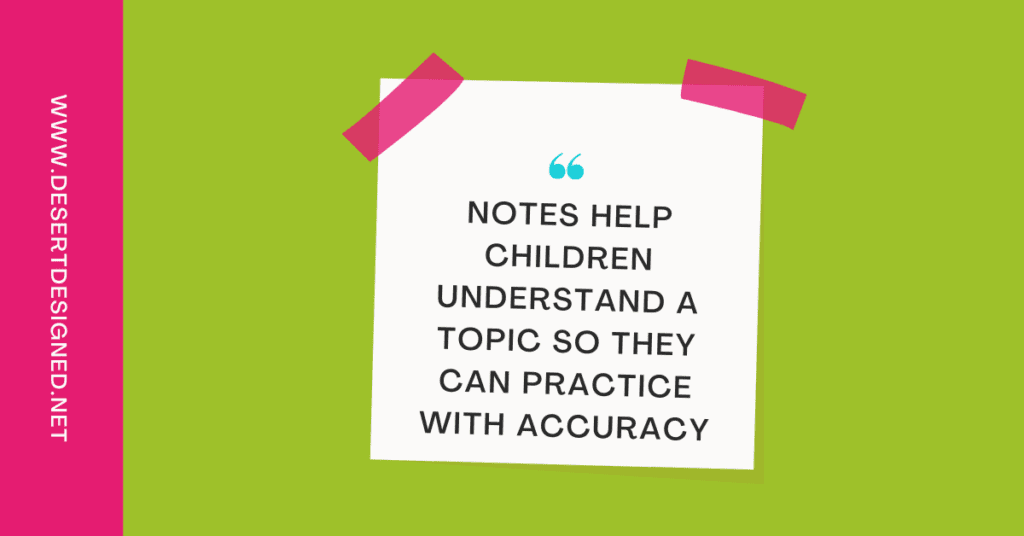
Benefits of Math Notebooks
Math notebooks make a great storehouse of information that kids gather during the school year. They help students articulate their mathematical thinking in writing and serve as a valuable source of math skill review.
If students are using math notebooks consistently, they are perfect to refer back to as skills are revisited and will often help students remember strategies they can use to approach a math problem.
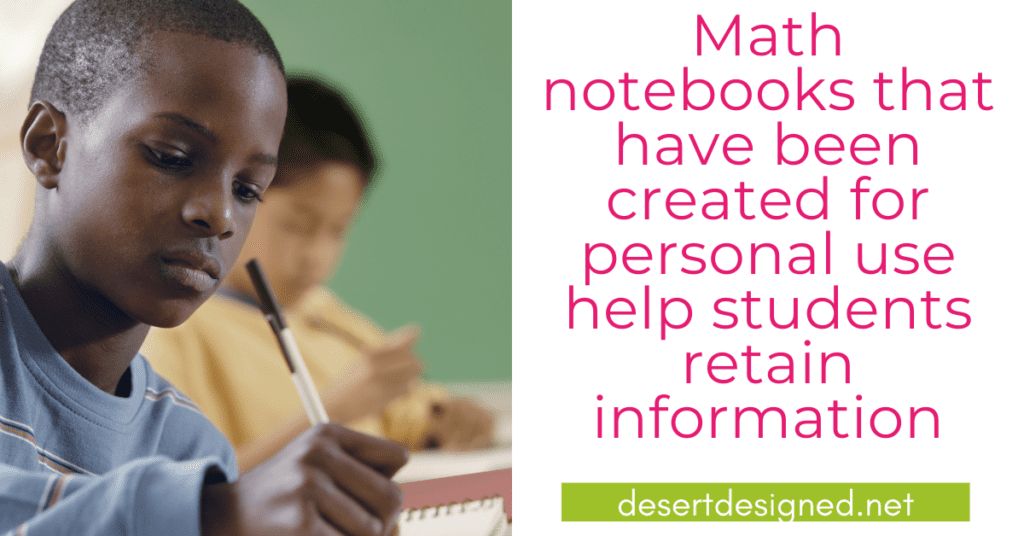
Image of a student studying and quote: Math notebooks created for personal use help students retain information.
While textbooks are also helpful reference tools, math notebooks that students have created for personal use are much more meaningful. They help students retain the information for a more extended time.
How to Teach Students to Take Notes in a Notebook
When thinking through how to teach students note-taking skills, consider your objective. Do you want them to learn the art of note-taking as a primary objective? Do you want them to learn the skill THROUGH note-taking? Or, is your goal to have a resource students can return to throughout the school year?
We all go through times where we get over-zealous with different teaching methods. Keep note-taking reasonable both for yourself and your students. When I initially started note-taking with my fifth graders, I had them write every single part in their notebooks by hand, and it took FOREVER! This strategy was not an effective use of time.

By keeping your objective in mind, you will find more success with note-taking.
How to Teach Students to Take Notes for Future Reference
You can use several strategies when your goal is to have students take notes that students can refer to throughout the year.
Consider typing out a portion of the notes you want students to have in their notebooks. You can type out entire sentences, headers, or just a portion of the notes. If you leave blank spaces for students to fill in, your note-taking process will go more smoothly.
Additionally, I recommend filling the notes in with your students in a format they can see. You can do this by using a document camera or typing the notes into your computer and projecting the image for the students.
The Art of Note-Taking: How to Teach Students to Take Notes
If your primary objective is for students to take notes while listening to a lecture or watching a video, there are several things to consider. Remember that this may be a new skill for many students. Conduct several lessons where taking notes is the primary goal.
Your First Independent Note-Taking Lesson
- Choose a topic that your students will find interesting.
- Be clear with your students that the primary goal of the lesson is for them to learn to take notes independently.
- Start with a video to take notes alongside your students and have something to compare to theirs.
- Pause the video periodically during important content.
- Allow students to raise their hands to request a video pause to give them time to write down information.
- Watch the video with captions ON.
- After watching and taking notes, compare your notes with those of your students.
- Have a class discussion about what was easy/difficult about the task and what they might do differently next time.
Follow-Up Independent Note-Taking Lesson(S)
In future sessions where the primary goal is for students to practice their note-taking skills, move from a video to a lecture with a slide show. The slides will allow students to see which material will be essential to jot down.
Have an outline for yourself as the teacher, as well. Be sure to refer to your outline throughout the lesson to keep your thoughts on track.
After the lesson, compare your notes with those of the students and discuss the outcome as a class.
When you teach students how to take notes, it takes time and practice to attain mastery. Be patient with the process. I love using Boom Cards to have students practice math skills. These Division with Partial Quotients Boom Cards are a favorite!

Tips and Tricks for Keeping Kids Organized
One of my early frustrations with having fifth graders take notes was their extreme lack of organization. Kids would write all over the pages, scribble, do random problems on random pages, and flip to the middle of a notebook when it’s time to write something down.
Sometimes as adults, we forget that these skills are not innate. Students need explicit instruction on how to use notebooks properly.
One of my favorite ways to help students organize their math notebooks is to start the year by making a table of contents on the first few pages. This activity sets the tone for using the notebook. It is not a place to do “scratch work,” but it is a place to take detailed notes about how to do the math we learn in the fifth grade.

After we make the table of contents, we number the pages in the notebook. As we add each topic, we take the time to write the title into the table of contents and the corresponding pages. The table of contents comes in handy when students are absent and need to catch up from their absence. They can easily see which pages they missed and borrow a friend’s notebook or my master notebook to record the notes I have given.
Digital vs. Paper Notebooks
It may be controversial, but I am not a proponent of the digital notebook. When students are doing math, it is effortless to ask them to flip to a notebook page and review our notes on a given topic. Paper notebooks can travel home with students. Parents who are helping to study can review the information with their children and see the methods we use in class.
In my opinion, many of the digital “notebooks” I have run across are not about taking notes. Instead, they are a collection of math problems with a few problems on each slide. They are also challenging to keep organized when they include many topics. It is not easy for students to find prior skills to review.
I think practicing on digital platforms is fine, but I don’t think that typing math has the same impact as writing notes with paper and pencil.
How to Teach Students to Take Notes: Wrap-Up
Think about your current note-taking situation in your classroom. Consider implementing one of the strategies I listed above to help improve the note-taking process for yourself and your students. Don’t forget to download my free note-taking template to make note-taking easier than ever with your students!


